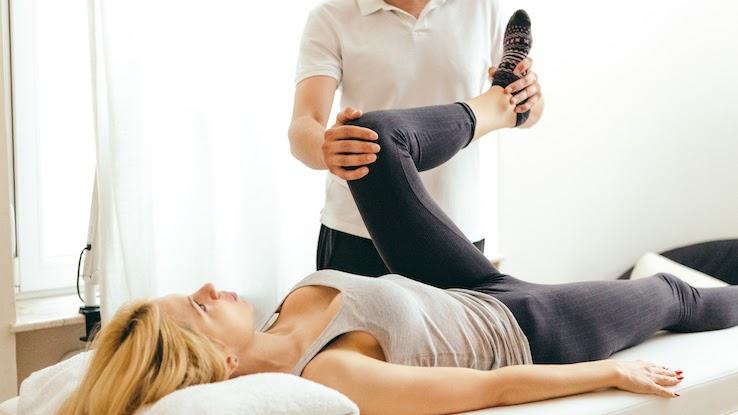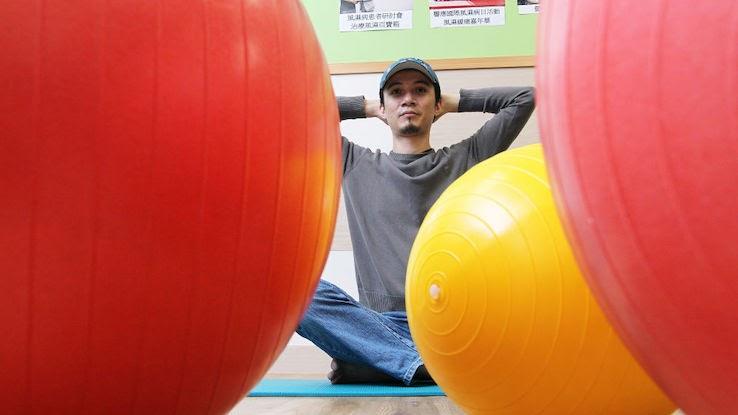
Ankylosing spondylitis (AS) is a type of arthritis that mainly affects the spine, although it can also affect other joints. This condition can cause severe chronic pain and become debilitating. Mild cases usually involve inflammation of your vertebrae. However, AS can also lead to ankylosis, which involves the growth of osteophytes — small bony formations — in your spine. This new growth can limit mobility.
AS may spread to different joints, causing further loss of mobility, and may even affect your heart and lungs. Because this condition can impact their health in so many different ways, people with AS may wonder if exercising is safe — especially because they don’t want to cause more inflammation or trigger ankylosis. Learn more about ankylosing spondylitis and what exercises may be safe if you have this condition, keeping in mind you should always talk to your doctor first before trying new movements.
Should You Exercise With AS?
You might be concerned about exercising with AS or with other types of spondyloarthritis because you want to avoid aggravating and inflaming your joints further. However, according to the Spondylitis Association of America, exercise is one of the most important treatments for AS because it keeps the joints more mobile. Regular exercise can help ease the pain of AS and promote better posture. And because AS mainly affects the spine, improving your posture is crucial for limiting pain.

While it’s important to exercise a little each day, even if it’s only for a few minutes, you need to do so with caution. You should be working closely with a physical therapist to ensure that you’re completing the proper exercises based on your condition’s level of severity — and doing those workouts correctly. Your therapist and healthcare team can discuss the best types of exercises for you that won’t cause further injury, particularly if you’re in the middle of a flare-up. They’ll likely want you to do different movements to activate many different muscle groups and joints. Restricting your body to one or two motions can cause stress and further inflammation, especially on your spine.
Things You Should Avoid
To stay safe, people with AS should also avoid certain things when it comes to exercise. You should always stop exercising if you feel pain. If you’re doing a certain exercise, such as a stretch, and you feel a slight burn, that’s the point where you should stop — don’t try to “push through it.” That point is healthy, because that’s a sign of a deeper stretch, but pushing further could cause pain and aggravate inflammation.

Another good thing to keep in mind is not to overdo it. Die-hard fitness fans may choose to run 10 miles a day or go to the gym seven days a week, but this isn’t wise if you have AS. Daily exercise is fine, but you’ll want to keep workouts short and productive. Concentrate on the exercises your healthcare team and physical therapist provide for you. Ask them to perform an assessment on you before they prescribe exercise so they can determine what precautions you need to follow to prevent injury.
Exercises You Can Do
In addition to what your physical therapist may have discussed with you, there are other activities many people with AS can perform safely. Swimming and water therapy can work out your joints without putting as much pressure on them, and these activities have a lower risk of causing inflammation. They work out your entire body and give you a chance to enjoy some fresh air if you swim in an outdoor pool. One study even found that swimming can improve your AS-related pain more than at-home workouts.

Strength training is another exercise you can (and likely should) try if you have AS. Getting your arm muscles strong takes some strain off the joints in your back, which can lessen inflammation. A complete strength training program, which incorporates strengthening your arm and core muscles, is best for reducing inflammation. It’s important to work with someone who’s knowledgeable about AS in developing your training routine, though.
Yoga and pilates — which are also fantastic for strengthening your core and supporting your spine — are frequently recommended for those with AS. So is daily stretching, particularly if you can’t fit in more strenuous exercise that day. Dancing and bicycling both offer a safe and fun way to get fit, but it’s important to keep your movements low-impact to preserve your joints. Interested in a body and mind practice? Try tai chi, which is very gentle and AS-safe. But, be sure to seek out an experienced instructor, join a class or work one-on-one with someone with whom you feel comfortable. You can also simply go for a longer walk to get your blood pumping and your joints moving.
Before you attempt a new exercise, again, ask your healthcare team about what’s safest. They’ll take your level of mobility and overall health into account to determine a plan that’s right for you.





